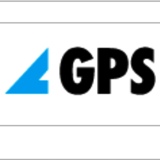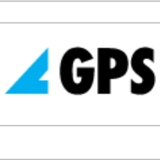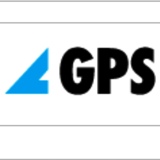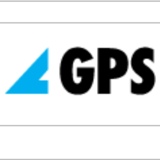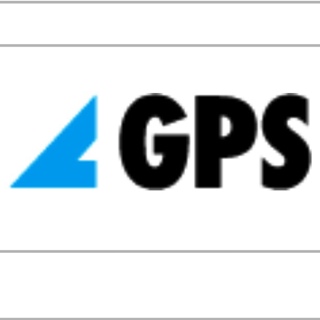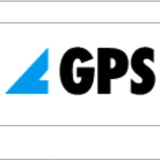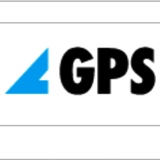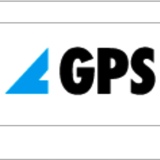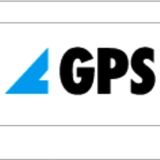Information
-
Audit reference number (automatic)
-
Description of area/cell/process being audited
-
Site and Department
-
Scope of the audit (See audit plan and add to this as necessary)
-
Conducted by
-
Conducted on
-
Are there actions which require close out?
-
Revisit date (if there are actions to close out)
General Help
-
Take photographs or sketch to help clarify any issues you identify as required in each section. Don't forget to record the good points as well.
You must select compliance level from the options:
OK = Satisfactory (It is working effectively and reliably)
NCR = Non-Conforming (It is NOT working effectively)
OBS = Observation (there may be a slight deviation but generally is working well)
OFI = Opportunity for Improvement (ideas that could make it better than it is)
N/A = Not Applicable (this question does not apply to the area being audited) -
Please ensure you write down, or photograph: serial numbers, reference numbers, order numbers etc to ensure that the audit is repeatable
-
In order to allow typing information against a question, tap on the text of the question to open the text input box
People Issues
-
OK = Satisfactory (It is working effectively and reliably)
NCR = Non-Conforming (It is NOT working effectively)
OBS = Observation (there may be a slight deviation but generally is working well)
OFI = Opportunity for Improvement (ideas that could make it better than it is)
N/A = Not Applicable (this question does not apply to the area being audited
1. People issues (communication)
-
Guidance:
Look for evidence of: team talks, noticeboards, (check information is up to date and relevant), KPI graphs, departmental performance figures, information regarding the performance of the quality management system, environmental management system, or health and safety management system (such as accidents, scrap, complaints, OTIF, etc) -
Is there evidence of communication within the department? (Describe/photograph)
-
Action(s) required:
you must also identify who is responsible for the action(s)
Action(s)
-
Action
-
Responsibility:
-
Has action been taken to address the action, and to a satisfactory level?
-
Verified by
2. People Issues (competence and capability)
-
Guidance:
Look for examples of Young persons (Under 18 years of age) and pregnant workers (health and safety concerns). These two groups are especially at risk. Young persons because of inexperience and immaturity and pregnancy can affect ability to carry out certain tasks safely (for example manual handling)
Look for evidence of employees having undergone induction training, quality, environmental and health and safety awareness training, and training for the specific tasks they are performing.
Look especially for tasks which require specific skills or qualification such as driving fork lift trucks, changing grinding wheels, measuring or testing product etc.
Competency can be based on education, training, skills, and/or experience. Look for evidence of records of training - are they suitable and sufficient? Are there issues with understanding (for example language barriers). Is there evidence of stress or violent behaviour? is there evidence of unsafe or environmentally unsound behaviour or practice?
Are any of the workers disabled or otherwise disadvantaged in performing the task(s)?
Is there evidence of lack of competence or capability affecting product quality or customer service? Is there evidence of ongoing performance appraisal on persons within the department or area being audited? Is there adequate supervision? -
Are personnel performing work which could impact on the customer, service, health and safety, or the environment, competent and capable?
-
Action(s) required:
you must also identify who is responsible for the action(s)
Action(s)
-
Action
-
Responsibility:
-
Has action been taken to address the action, and to a satisfactory level?
-
Verified by
3. People Issues (responsibility and authority)
-
Guidance:
Is it clear what each person's responsibility and authority level is? (Is there evidence of decisions not being made or tasks not been done, because no one is quite sure whose job it is?).
Are the roles clearly defined and documented within a job profile, and if not, how are people informed about their responsibilities and authority levels? Are budgetary levels and responsibilities clear? -
Is responsibility and authority clearly defined?
-
Action(s) required:
you must also identify who is responsible for the action(s)
Action(s)
-
Action
-
Responsibility:
-
Has action been taken to address the action, and to a satisfactory level?
-
Verified by
Material Issues
-
OK = Satisfactory (It is working effectively and reliably)
NCR = Non-Conforming (It is NOT working effectively)
OBS = Observation (there may be a slight deviation but generally is working well)
OFI = Opportunity for Improvement (ideas that could make it better than it is)
N/A = Not Applicable (this question does not apply to the area being audited
1. Materials (Hazards)
-
Guidance:
Toxic, Irritant, Sensitising, Corrosive or Carcinogenic chemicals, and chemicals which have a significant impact on the environment, that are purchased must be COSHH assessed prior to purchase/use (To assess the health and safety and environmental concerns). How is this controlled?
How are updated MSDS sheets obtained to ensure the assessment remains current? -
How are purchased chemicals controlled to ensure that they are COSHH assessed before purchase?<br>
-
Action(s) required:
you must also identify who is responsible for the action(s)
Action(s)
-
Action
-
Responsibility:
-
Has action been taken to address the action, and to a satisfactory level?
-
Verified by
2. Materials (Safe Storage)
-
Guidance:
Check any stored items, ensure that:
Is it safe? (not exceeding safe working loads for shelving, and safely and suitably stacked - for example stability and load distribution).
Ensure stored items cannot fall off the top of cupboards for example. -
Are all materials stored in a safe manner? (Describe/photograph)
-
Action(s) required:
you must also identify who is responsible for the action(s)
Action(s)
-
Action
-
Responsibility:
-
Has action been taken to address the action, and to a satisfactory level?
-
Verified by
Equipment issues
-
OK = Satisfactory (It is working effectively and reliably)
NCR = Non-Conforming (It is NOT working effectively)
OBS = Observation (there may be a slight deviation but generally is working well)
OFI = Opportunity for Improvement (ideas that could make it better than it is)
N/A = Not Applicable (this question does not apply to the area being audited
1. Equipment (Accuracy and capability)
-
Guidance:
Is equipment and machinery in use suitable for its intended purpose and calibrated to ensure accuracy as necessary (if used to validate product quality, or measure environmental emissions or levels, or measure health and safety performance)?
Is equipment's performance consistently repeatable to ensure reliability of the process? -
Is equipment and machinery in use; suitable, calibrated and capable? (Describe/photograph)
-
Action(s) required:
you must also identify who is responsible for the action(s)
Action(s)
-
Action
-
Responsibility:
-
Has action been taken to address the action, and to a satisfactory level?
-
Verified by
2. Equipment (Safety and effectiveness)
-
Guidance:
Has equipment and machinery that is in use been assessed for PUWER (Provision and use of work equipment regulations) compliance?
Has equipment or machinery been tested as necessary (for example PAT testing on portable appliances)?
Has equipment undergone appropriate statutory examinations if necessary (for example lifting equipment such as cranes, eyebolts, slings etc and they are appropriately marked or colour coded, forklift trucks, fixed electrical panels, moulding machines etc)?
Is all equipment or machinery in use suitably guarded, (with the need to use a tool to remove that guard), to prevent access to the dangerous parts of machinery?
Are all electrical cabinets and other high-voltage sources locked to prevent unauthorised access?
Any sign of unsafe equipment?
Look for examples where equipment or machinery has deteriorated due to lack of maintenance or attention, for example, missing or damaged guards, damaged casings, or cables, secondary containment full of rainwater, deterioration of bunds etc.
Look for examples where such deterioration could result in the efficiency or the capability of the equipment or machinery being compromised -
Is equipment and machinery in use safe? (Describe/photograph)
-
Action(s) required:
you must also identify who is responsible for the action(s)
Action(s)
-
Action
-
Responsibility:
-
Has action been taken to address the action, and to a satisfactory level?
-
Verified by
3. Equipment (Training and authorisation)
-
Guidance:
Are personnel using equipment suitably trained or authorised to use such equipment (for example forklift trucks, ladders, changing grinding wheels etc)?
Check personnel are capable of using things like test and measuring equipment correctly
Do records demonstrate that personal have been trained to operate the process or equipment for the reasons of quality, environmental implications and health and safety implications -
Is all equipment and machinery used by suitably trained and authorised personnel? Describe/photograph)
-
Action(s) required:
you must also identify who is responsible for the action(s)
Action(s)
-
Action
-
Responsibility:
-
Has action been taken to address the action, and to a satisfactory level?
-
Verified by
Environment issues
-
OK = Satisfactory (It is working effectively and reliably)
NCR = Non-Conforming (It is NOT working effectively)
OBS = Observation (there may be a slight deviation but generally is working well)
OFI = Opportunity for Improvement (ideas that could make it better than it is)
N/A = Not Applicable (this question does not apply to the area being audited
1. Environment (Infrastructure of the building and environmental conditions)
-
Guidance:
Is there evidence of unsafe structural elements of the building (e.g. walls, doors, windows, floor etc)? For example, is the floor level and free from damage, obstruction, or slip/trip hazards.
Are the walls/windows/doorframes, secure and free from elements which could fall off or fail to operate?
Look for areas which could potentially be asbestos, look at the condition. If in doubt, refer to the asbestos survey information. Typically asbestos can be used to lag pipework, or cover pipework but it can also be used for the fabric of the building.
If you believe there is asbestos in the vicinity which potentially is damaged, you should immediately report this to the maintenance supervisor.
Is the in process, or storage temperature, humidity, or other environmental conditions such that it prevents poor quality or deterioration of quality? (For example rusting, moisture condensation etc) -
Are there issues with the building infrastructure or environmental conditions? Describe/photograph)
-
Action(s) required:
you must also identify who is responsible for the action(s)
Action(s)
-
Action
-
Responsibility:
-
Has action been taken to address the action, and to a satisfactory level?
-
Verified by
2. Environment (access and egress and ergonomics)
-
Guidance:
Is there free access and egress to the area being audited? Are fire exits clear? Are there constraints to carrying out tasks due to space or ergonomics of the process? -
Is there sufficient access and egress to the work areas? Are there issues with the ergonomics in the work area?(Describe/photograph)
-
Action(s) required:
you must also identify who is responsible for the action(s)
Action(s)
-
Action
-
Responsibility:
-
Has action been taken to address the action, and to a satisfactory level?
-
Verified by
3. Environment (waste, energy and emissions)
-
Guidance:
Are wastes from the process properly segregated and managed? Are recyclable wastes (cardboard, plastics, metal etc) and hazardous wastes (oil contaminated) for example, disposed of in the correct containers?
Are personnel clear on the correct disposal points?
Is equipment turned off when not in use?
Is there any evidence of emissions during the process? -
Are wastes, energy, and emissions properly managed? (Describe/photograph)
-
Action(s) required:
you must also identify who is responsible for the action(s)
Action(s)
-
Action
-
Responsibility:
-
Has action been taken to address the action, and to a satisfactory level?
-
Verified by
4. Environment (Storage/racking)
-
Guidance:
Is storage and racking suitable for the load and safe? (Check racking is marked clearly with the safe working load, is secure so it cannot topple over, and it is properly loaded) ?
Ensure that heavy and light items are distributed such that the risks of manual handling are minimised and the stability of the storage is maintained
Are legs of racking protected from damage?
Ensure that storage is properly stacked/located (i.e. Items are not likely to fall off shelves)
Check for unsuitable storage – for example wooden pallets used to support a load greater than their capacity or condition warrants. -
Is storage/racking suitably managed? (Describe/photograph)
-
Action(s) required:
you must also identify who is responsible for the action(s)
Action(s)
-
Action
-
Responsibility:
-
Has action been taken to address the action, and to a satisfactory level?
-
Verified by
5. Environment (Fire Hazard)
-
Guidance:
Is there any fire hazard in the area (for example: flammable chemicals in use, cardboard/wood or other flammable materials stored in such a way that they may cause of fire - such as against a hot surface)?
Is there any source of ignition in the area (such as welding, brazing or heaters)?
Is the evidence of blocked cooling systems or ventilation on equipment?
Has a fire risk assessment been conducted in the area/department? -
Is there any risk of fire? (Describe/photograph)
-
Action(s) required:
you must also identify who is responsible for the action(s)
Action(s)
-
Action
-
Responsibility:
-
Has action been taken to address the action, and to a satisfactory level?
-
Verified by
Process Issues
-
OK = Satisfactory (It is working effectively and reliably)
NCR = Non-Conforming (It is NOT working effectively)
OBS = Observation (there may be a slight deviation but generally is working well)
OFI = Opportunity for Improvement (ideas that could make it better than it is)
N/A = Not Applicable (this question does not apply to the area being audited
1. Process (change management)
-
Guidance:
If there is change in the department, is the integrity of department procedures/processes maintained?
Look for tasks not been carried out because someone is no longer in the department, changes in priority because of change of leadership or responsibility, or new manufacturing processes/departmental processing being implemented with associated learning curves. -
Have there been any changes in the department/area being audited, and what impact has it had?(Describe/photograph)
-
Action(s) required:
you must also identify who is responsible for the action(s)
Action(s)
-
Action
-
Responsibility:
-
Has action been taken to address the action, and to a satisfactory level?
-
Verified by
2. Process (Monitoring measurement of product)
-
Guidance:
Are quality objectives and quality requirements defined for the product (for example quality plans, specifications, work instructions, quality alerts etc).
Are the required verification, validation, monitoring, measurement, inspection and test activities specific to the product carried out correctly? (This could also include visual checks, counts, confirmation of correct product on receipt etc)
Are there suitable records of such inspections and tests?
Is the person responsible for the checks clearly identified?
Check for appropriate testing (for example batch release measurement and testing, process verification testing, and, if necessary, type/approvals testing).
Check also for approval status (if for example, an approval mark is being added to a product, is there evidence of the product being approved?)
Are the results of measurements and tests suitably analysed looking for trends, and possibly indicating need for increased or decreased levels of activity? -
Are all relevant checks and measurements being undertaken and suitably analysed?(Describe/photograph)
-
Action(s) required:
you must also identify who is responsible for the action(s)
Action(s)
-
Action
-
Responsibility:
-
Has action been taken to address the action, and to a satisfactory level?
-
Verified by
3. Process (Legal/standards compliance)
-
Guidance:
Is the legislation/standard/specification to which the process must comply known, documented and available?
Is the legislation (if applicable) recorded within the legal register?
Consider hazardous processes, for example working in confined spaces, working at height, compliance to gas standards, transport requirements (hazardous chemicals for example)
Consider items such as import/export documentation, country of origin certification, wooden pallet marking related to treatment etc
Consider waste management and packaging submissions for example -
Are applicable legislation or standards/specifications known? Are they available? Are they complied with?(Describe/photograph)
-
Action(s) required:
you must also identify who is responsible for the action(s)
Action(s)
-
Action
-
Responsibility:
-
Has action been taken to address the action, and to a satisfactory level?
-
Verified by
4. Process (documentation)
-
Guidance:
Is the process suitably documented via a process flow chart, work instruction, standard operation, specification sheet, quality, environmental or health and safety alert, booklet etc
If not documented, is the person performing the process suitably trained and/or experienced or supervised/monitored)?
Are all documents controlled in such a way that changes are identified, the document having an issue/revision number and date, and is it approved prior to issue?
Are documents legible and identifiable?
Are documents of external origin (such as customer drawings/specifications) suitably controlled? -
Is the process suitably documented and is the input/output clearly defined? (Describe/photograph)
-
Action(s) required:
you must also identify who is responsible for the action(s)
Action(s)
-
Action
-
Responsibility:
-
Has action been taken to address the action, and to a satisfactory level?
-
Verified by
5. Process (measurement)
-
Guidance:
What are the key process measures?
Are these displayed? (For example KPI's, departmental charts or graphs etc)? If so, is there improvement noted? if not what actions of being taken to improve things?
Is data generated and analysed looking for trends and the need for action to improve
For example, supplier performance measures, purchase non-conformance, cost savings, cost avoidance etc -
Are key processes measured, analysed, communicated and do they demonstrate appropriate improvement? (Describe/photograph)
-
Action(s) required:
you must also identify who is responsible for the action(s)
Action(s)
-
Action
-
Responsibility:
-
Has action been taken to address the action, and to a satisfactory level?
-
Verified by
6. Process (Risk assessment/aspects evaluation)
-
Guidance:
Are processes being undertaken risk assessed? (Examples of risk assessment are: general, task specific, manual handling, COSHH, PUWER, VDU, explosive atmosphere, young or pregnant workers, noise, fire etc (see section c23 in the health and safety management system)
Are there any outstanding actions from any such assessments?
Are the processes being undertaken covered by the environmental aspect evaluation? (See EM-01 – and the environmental aspects evaluation database - in the environmental management system) -
Are there suitable risk assessments? And are activities covered in environmental aspect evaluation? Are actions from such assessments dealt with? (Describe/photograph)
-
Action(s) required:
you must also identify who is responsible for the action(s)
Action(s)
-
Action
-
Responsibility:
-
Has action been taken to address the action, and to a satisfactory level?
-
Verified by
7. Process (Data and records)
-
Guidance:
Are all data and records, created as part of the process, suitably controlled? (Identified, backed up and suitably stored, with clearly documented disposal and retention periods)
The control of records should include electronic records as well as paper records.
Identify the records within the audit, and ensure that they are covered within the quality record process (P15 C)
For example, supplier audit reports, waste licences, waste transfer notes (these should be kept for 2 years), purchase orders, tender documents etc
Do waste transfer notes show the waste regulation codes and a statement about the waste hierarchy having been fulfilled? -
Are all data records suitably controlled? (Describe/photograph)
-
Action(s) required:
you must also identify who is responsible for the action(s)
Action(s)
-
Action
-
Responsibility:
-
Has action been taken to address the action, and to a satisfactory level?
-
Verified by
8. Process (Non-conformance/rework/corrective/preventive action)
-
Guidance:
When supplier non-conformance reports are created, is action taken to resolve the issue in terms of documenting the problem, disposal action being taken (return, scrapped, rework etc), containment action (making sure the customers not receive the problem or the item is not used in production), root cause analysis by the supplier with resulting corrective action to resolve the root cause?
Additionally, is such failure analysed to monitor supplier performance, and does the supplier take proactive measures to prevent problems ? -
How are supplier non conformance reports managed? (Describe/photograph)
-
Action(s) required:
you must also identify who is responsible for the action(s)
Action(s)
-
Action
-
Responsibility:
-
Has action been taken to address the action, and to a satisfactory level?
-
Verified by
9. Process (Identification and traceability)
-
Guidance:
During the process, is the status of the output of the process (whether it be product or documentation), clear?
Check materials in use (components, raw materials, products etc) are clearly identified in terms of their status and traceability and what they are for (e.g. supplier, batch number, part number, inspection and test status etc)
Is it identifiable, such that it is clear what it is, and what needs to happen to it next?
This identification and traceability would include things such as; part numbers, operator stamps, batch numbers, works order numbers, purchase order numbers, material identification, etc
Check has the operators has marked his production with his operator stamp - typically on the fitting
moulding will have a blue card on the stillage and a traceability barcode number on the fitting
If there evidence of stillages which are empty and still labelled with identification tape? Is tape the correct colour for the content?
Are bag and box labels correct and do they match the product in them?
Is the shift number correct (first digit = shift, second digit = batch, third digit = day, fourth and fifth digit = week, sixth and seventh digit = year)?
If product is held with awaiting QC tape, is it identified as to the reason why held?
Is there evidence of the previous operator (prior shift) labels or prestamped bags or boxes etc?
Is the operator stamp register up to date? -
Are all products and items clearly identified and traceable? (Describe/photograph)<br><br>Are suppliers asked to identify items to ensure that they are traceable and identifiable with the following characteristics?<br><br>Weight, part number and description, supplier, batch number etc
-
Action(s) required:
you must also identify who is responsible for the action(s)
Action(s)
-
Action
-
Responsibility:
-
Has action been taken to address the action, and to a satisfactory level?
-
Verified by
10. Process (PPE - Personal protective equipment)
-
Guidance:
Are all personnel wearing PPE which is required for the process (take note of signs and process requirements to identify whether people should be wearing hearing protection eye protection etc)?
Are people suitably trained and made aware of how to use the PPE? IS PPE suitable for its intended purpose (for example a dust mask being used for solvent use, cotton gloves for oil etc)? -
Is a PPE being worn when required? Is it suitable and being correctly used? (Describe/photograph)
-
Action(s) required:
you must also identify who is responsible for the action(s)
Action(s)
-
Action
-
Responsibility:
-
Has action been taken to address the action, and to a satisfactory level?
-
Verified by
11. Process (unsafe acts/conditions and accidents)
-
Guidance:
Have there been any health and safety, environmental, or quality concerns raised in the area in the last six months? Have there been any accidents in the area in the last six months?
Are there any outstanding actions from surveys and audits from external bodies (such as Owen David, SGS BSi, etc)?
If so, has action been taken to resolve the problems?
Has there been any notification to the HSE of any dangerous occurrence? -
Have there been accidents or near misses related to the process? If so what action(s) have been taken?(Describe/photograph)
-
Action(s) required:
you must also identify who is responsible for the action(s)
Action(s)
-
Action
-
Responsibility:
-
Has action been taken to address the action, and to a satisfactory level?
-
Verified by
12. Process (Emergency)
-
Guidance:
Is there evidence of emergency preparedness - spill kits, fire extinguishers, fire exits, knowledge of emergency plan, knowledge of what to do in the event of a fire, spill, accident etc?
Is all emergency equipment in operational condition (e.g. spill kits full, spill mats available, bunds not full of water, fire extinguishers not discharged etc)? -
Is there suitable emergency preparedness?(Describe/photograph)
-
Action(s) required:
you must also identify who is responsible for the action(s)
Action(s)
-
Action
-
Responsibility:
-
Has action been taken to address the action, and to a satisfactory level?
-
Verified by
13. Process (Outsourcing)
-
Guidance:
Are any processes or parts of processes outsourced? If so how are these controlled to ensure compliance to customer requirements, environmental compliance, health and safety compliance, etc)?
If these outsourced activities are carried out on our premises, is the contractor managed through permits to work etc (See C05).
How do we ensure that contractors working on our premises comply with environmental requirements (such a waste, discharges, emissions etc), or health and safety requirements (such as PUWER, working at height etc).
How do we confirm the quality of the outsourced operation?
How is the outsourced activity approved and controlled? -
Is anything outsourced? if so how is it controlled? (Describe/photograph)
-
Action(s) required:
you must also identify who is responsible for the action(s)
Action(s)
-
Action
-
Responsibility:
-
Has action been taken to address the action, and to a satisfactory level?
-
Verified by
Specific department or process questions
-
OK = Satisfactory (It is working effectively and reliably)
NCR = Non-Conforming (It is NOT working effectively)
OBS = Observation (there may be a slight deviation but generally is working well)
OFI = Opportunity for Improvement (ideas that could make it better than it is)
N/A = Not Applicable (this question does not apply to the area being audited
Process specific questions based on the process flows and ISO requirements
1. Waste Management
-
Guidance:
Are waste transfer notes obtained for all waste types?
Do these waste transfer notes show information relating to the waste code, statement of compliance with the waste hierarchy, type of waste, quantity of waste and the container, the details of the person collecting the waste, the details of the final disposal point (transfer or collection point)?
Is the waste collector licences to carry the waste, and is the final disposal point licensed to take such waste?
Have any waste management collectors been audited or followed? -
Is waste managed according to legislation?
-
Action(s) required:
you must also identify who is responsible for the action(s)
Action(s)
-
Action
-
Responsibility:
-
Has action been taken to address the action, and to a satisfactory level?
-
Verified by
2. What is the process for new supplier approval and tenders? Is this documented?
-
Guidance:
What is the process for supplier approval, and for tendering?
As part of this approval process do we ask for copies of certification? Do we audit suppliers prior to awarding contracts? Do we, where appropriate, ask for method statements or risk assessments for services (on site)
Is is process clearly documented?
What are the criteria we use to award tenders and contracts? -
How are suppliers approved?
-
Action(s) required:
you must also identify who is responsible for the action(s)
Action(s)
-
Action
-
Responsibility:
-
Has action been taken to address the action, and to a satisfactory level?
-
Verified by
3. What information is requested from suppliers?
-
Guidance:
Are suppliers asked to supplier any of the following information?
Certificates of analysis or conformity
COSHH Data
Test results or inspection results
In the case of machinery and equipment, is there a request for compliance to the machinery directive? For guards, electrical safety etc
Are suppliers of services who are to come on site, asked for appropriate risk assessments, method statements, copies of public liability insurance and other appropriate insurances and certifications (for example electrical contractors, gas contractors etc)
How are goods inwards requirements defined?
-
What information is requested for suppliers?
-
Action(s) required:
you must also identify who is responsible for the action(s)
Action(s)
-
Action
-
Responsibility:
-
Has action been taken to address the action, and to a satisfactory level?
-
Verified by
4. Packing submission
-
Guidance:
Look at the packaging waste submission document and ensure this information has been completed and submitted as required. Currently, the business use Valpak for this process. -
Has the packaging submission been done for the previous period?
-
Action(s) required:
you must also identify who is responsible for the action(s)
Action(s)
-
Action
-
Responsibility:
-
Has action been taken to address the action, and to a satisfactory level?
-
Verified by
Additional Checks
Additional Checklist items
-
Additional checklist item:
-
Additional check details
-
Compliant?
-
Action(s) required:
you must also identify who is responsible for the action(s)
Action(s)
-
Action
-
Responsibility:
-
Has action been taken to address the action, and to a satisfactory level?
-
Verified by
